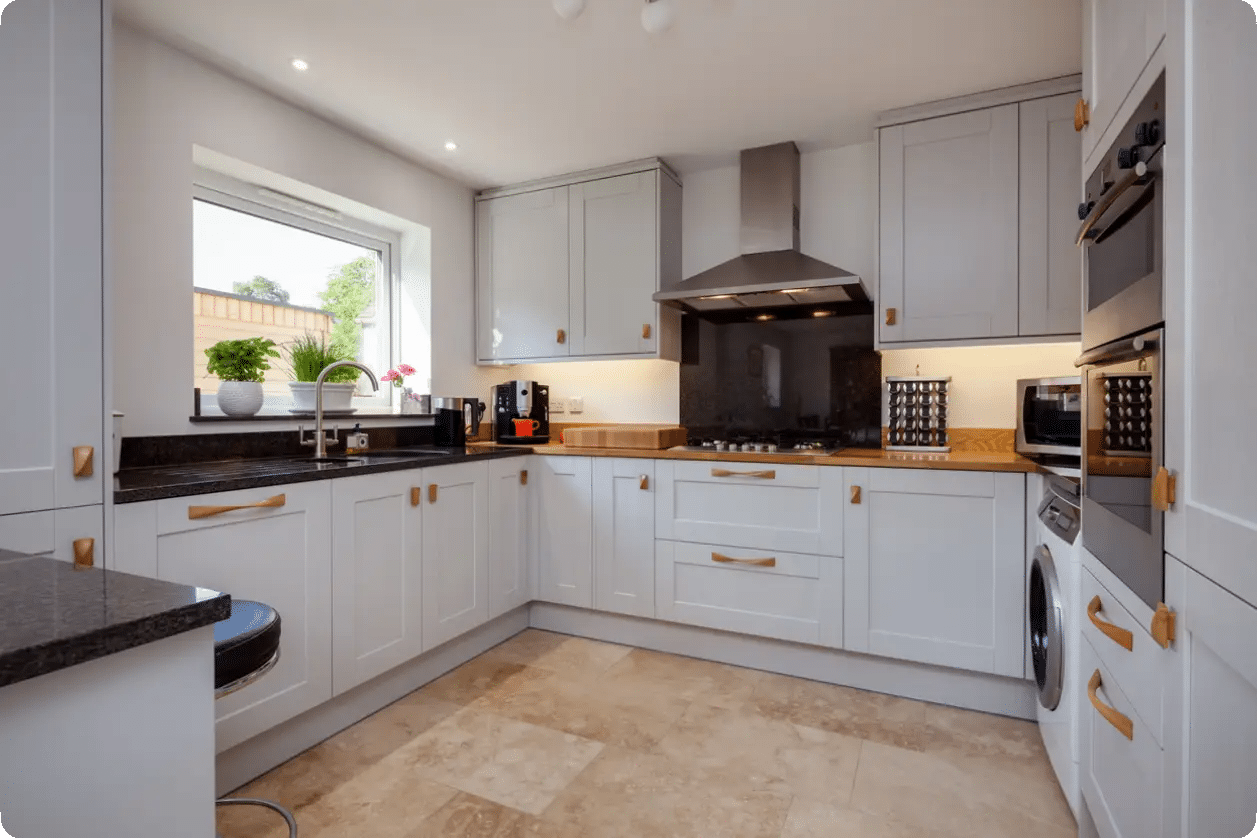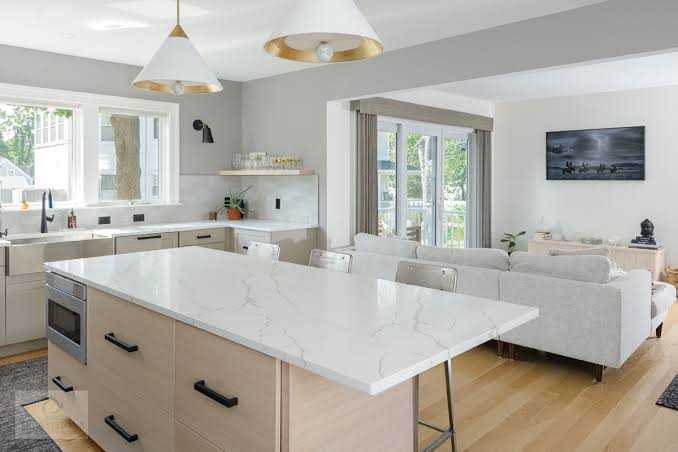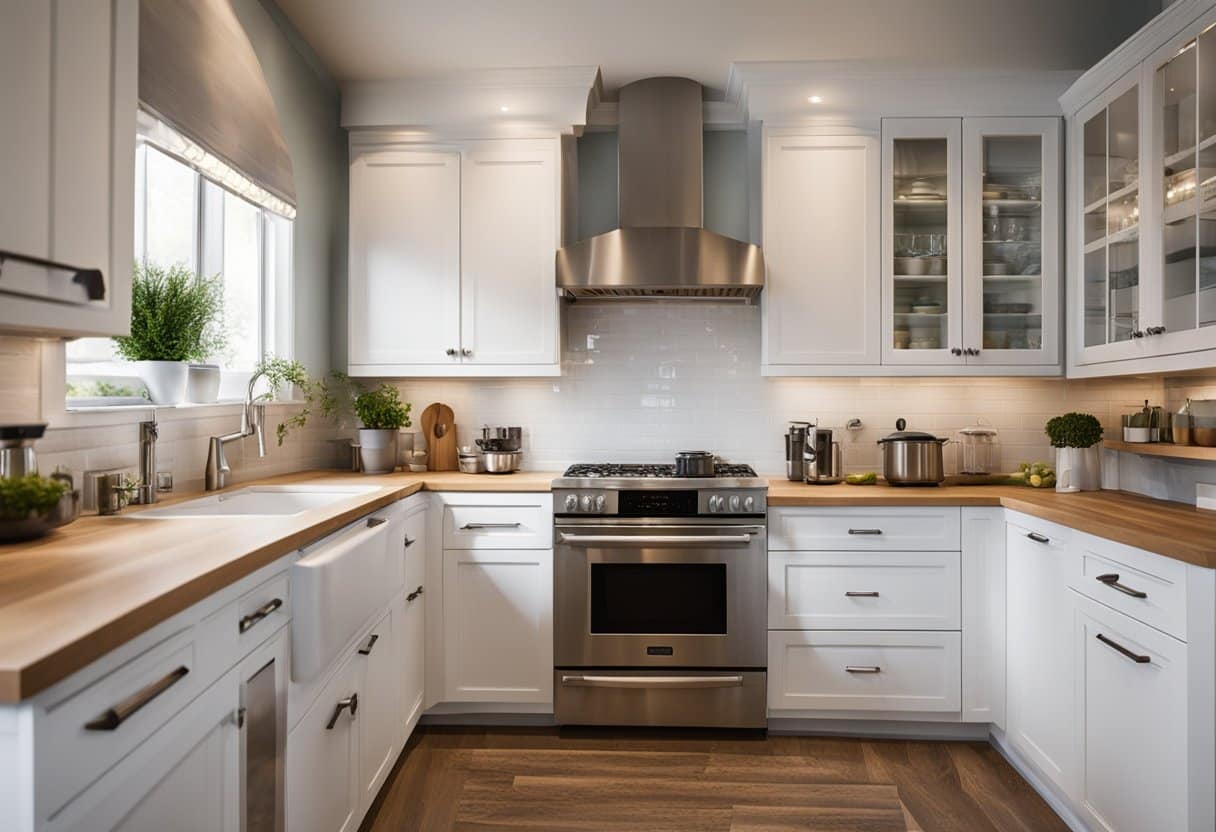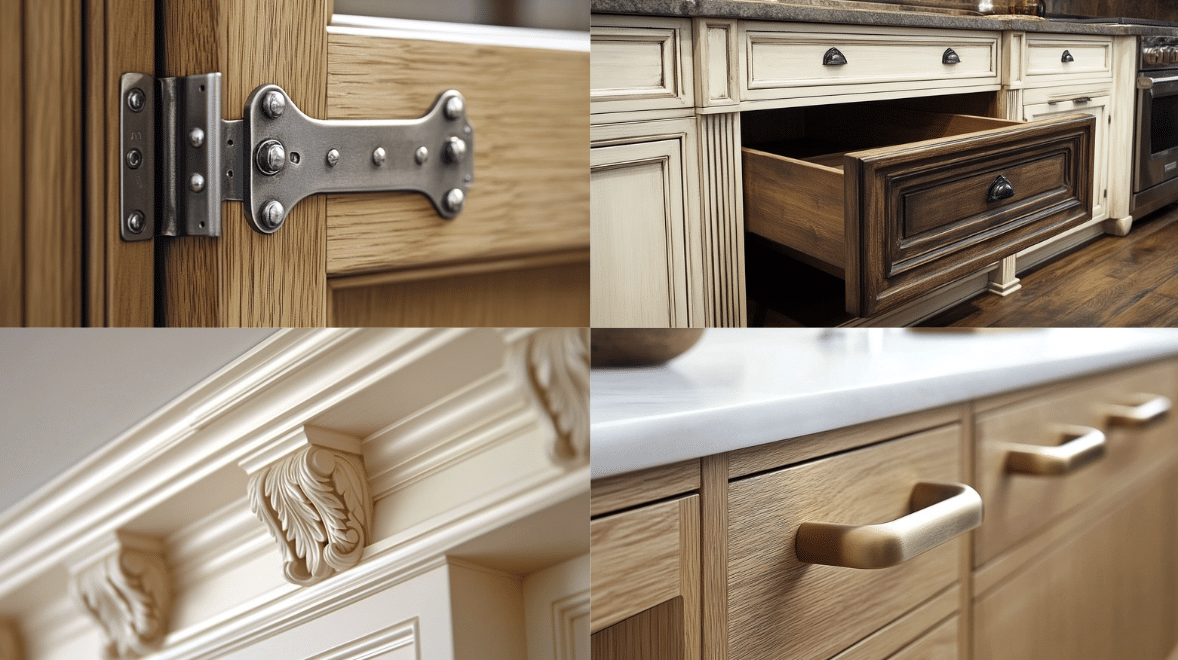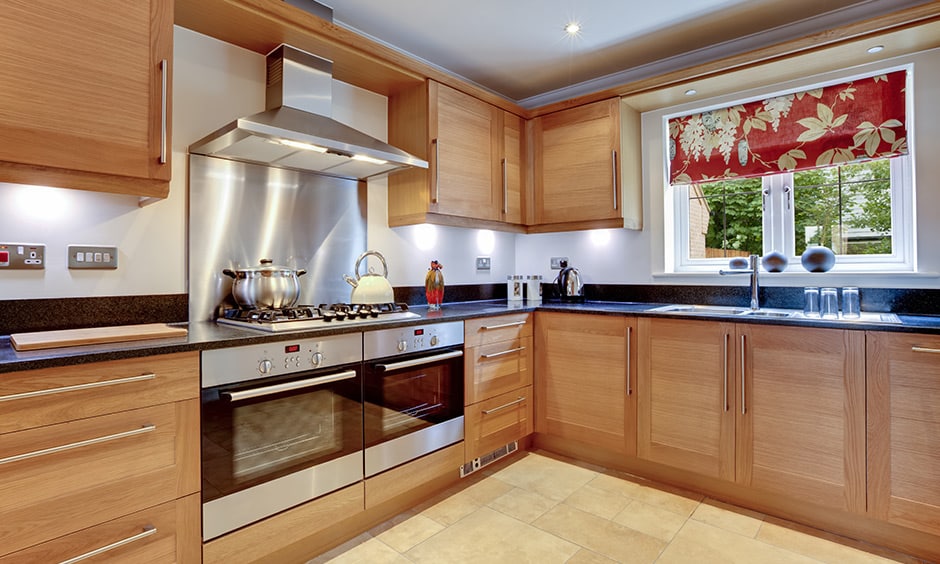Understanding Shaker Kitchens: A Comprehensive Guide to Shaker Style
Designing or remodelling your kitchen can be a fun and exciting process as you get to personalize and tailor the space to fit your lifestyle perfectly. From selecting colour schemes and finishes to deciding on the layout and storage solutions, every decision helps make your kitchen a reflection of your taste and needs.
Remodelling or designing a kitchen also typically involves deciding on the right kitchen cabinet layout and design. Cabinets can significantly influence not only the look of your kitchen but also its functionality and efficiency.
A well-planned cabinet layout can maximize storage space, make daily tasks easier, and ensure that everything you need is within reach.
There are multiple styles of kitchen cabinets to choose from, such as Flat-panel cabinets, raised panels, shaker-style cabinets and more. In this blog, we will go into detail on what are shaker style cabinets, discuss the advantages and disadvantages, and whether your kitchen is a good fit for shaker-style cabinets.
What Are Shaker-Style Cabinets?
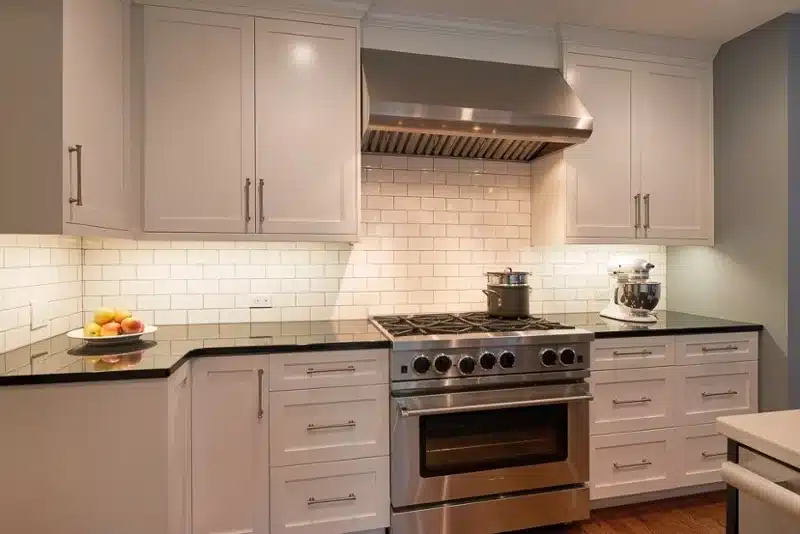
Shaker-style cabinets typically feature a minimalist aesthetic characterized by flat-panel doors with a recessed center panel and a sturdy frame. They often use durable, high-quality wood and showcase natural finishes or neutral paint colours.
The craftsmanship is often highlighted by the use of high-quality woods such as maple, cherry, or oak, and finishes are usually natural or in neutral colours like white, gray, or beige.
The lack of ornate details gives these cabinets a timeless appeal, making them suitable for various design styles, from rustic farmhouses to sleek contemporary.
Aside from kitchens, these cabinets can also be used in other rooms of your home, such as the bathroom and home office.
Interesting History
Shaker-style cabinets first emerged in the late 18th century and were originally created by the Shakers, a religious community that focused on living simply and sustainably.
They believed that all objects should have a purpose and be made with care, resulting in furniture designs that were straightforward, sturdy, and devoid of excessive decoration.
Why Are Shaker Kitchens Popular?
Shaker-style cabinets have become a popular choice among homeowners, according to cabinet installers. This cabinet style is typically chosen by homeowners who appreciate a blend of traditional craftsmanship and modern simplicity.
Their clean lines and functional design make them versatile enough to fit into various interior styles, from rustic farmhouse kitchens to sleek, contemporary spaces.
Pros and Cons of Shaker-Style Cabinets
Pros of Shaker-Style Cabinets
- Highly Versatile: Due to their simple design, Shaker-style cabinets are suitable for a variety of interior design styles, from traditional to contemporary. This means that even if you decide to change the interior style of your kitchen in the future, your Shaker-style cabinets may still fit the aesthetic you’ll choose.
- Top-Quality Craftsmanship: Typically made from durable hardwoods like oak, maple, cherry, and birch, Shaker cabinets are built to last. The traditional joinery techniques used in their construction, such as mortise and tenon joints, contribute to their strength and longevity.
- Easy Maintenance: The straightforward design of Shaker cabinets, with their recessed panel doors, makes them easy to clean and maintain. There are no intricate details or mouldings that can collect dust and grime, ensuring a consistently fresh appearance with minimal effort.
- Provides Ample Storage Space: Shaker cabinets often include adjustable shelves and deep drawers that allow for flexible storage options. This feature makes it easy to accommodate items of varying heights and sizes, optimizing the use of available space.
- Customizable: Shaker cabinets can be easily personalized with different finishes, colors, and hardware. This flexibility allows homeowners to tailor the cabinets to their specific tastes and the overall decor of their kitchen.
Cons of Shaker-Style Cabinets
- Not Ideal for People with Maximalist Aesthetics: The lack of intricate details and embellishments can make Shaker-style cabinets appear unappealing for homeowners who prefer a maximalist aesthetic. Maximalist designs thrive on excess, boldness, and a mix of styles and eras, which starkly contrasts with the clean lines and restrained elegance of Shaker cabinetry.
- Higher Cost: The high-quality materials and traditional craftsmanship that go into Shaker-style cabinets often result in a higher upfront cost compared to mass-produced, lower-quality alternatives. This can be a significant consideration for budget-conscious homeowners.
- Limited Variety in Door Styles: While Shaker cabinets are highly customizable in terms of colour and finish, the basic door style remains consistent. Homeowners looking for a wider variety of door styles might find Shaker cabinets somewhat limiting.
- Potential for Wear: Despite their durability, the flat, recessed panels of Shaker cabinets can show signs of wear more readily than more ornate designs, particularly in high-traffic kitchens. Chips, scratches, and dings may be more noticeable on smooth surfaces.
Skinny Shaker Cabinets Vs Traditional Shaker Cabinets
As you explore Shaker cabinets, you’ll find “skinny” or “slim” options, which lean towards a modern aesthetic with narrower stiles and rails—sometimes just ¾ inches wide—offering a broader recessed panel.
Traditional Shaker cabinets have stiles and rails ranging from 2 ¼ to 3 ½ inches and an ¼ inch step down to the panel. For a more contemporary style, look into these slimmer designs, which often have a shallower ⅛ inch step. Keep in mind that these thinner cabinets might need special hardware.
Main Takeaways
Shaker-style cabinets are a great option for homeowners who prefer a simple and versatile design. Their clean, simple lines fit well into both traditional and modern kitchen settings, providing a classic yet adaptable look.
Make sure to consider the specific aesthetic you want to achieve, whether it’s a more rustic feel with natural wood tones or a sleek modern look with painted finishes. Additionally, consider the cost and installation process to ensure it fits within your budget and timeline.

